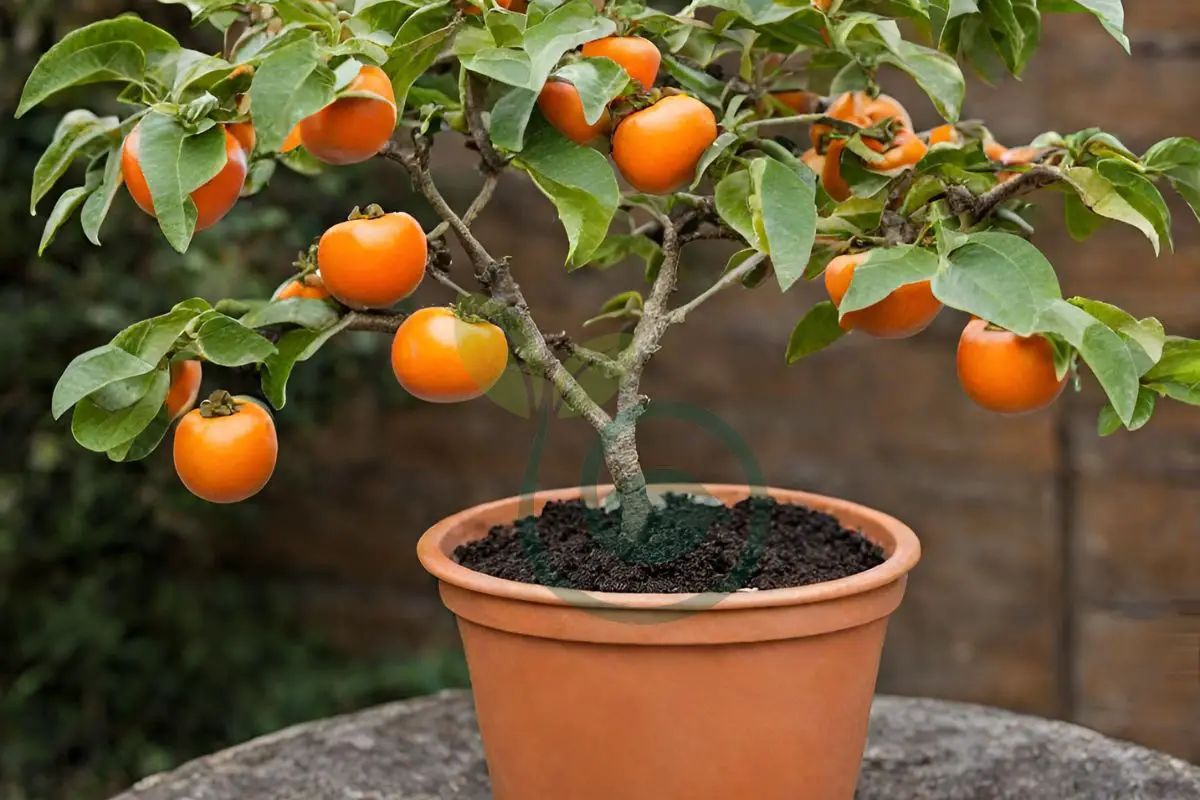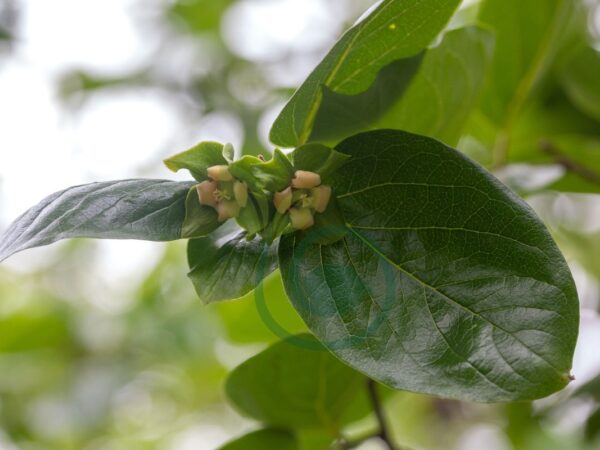Ever wondered if you could have your very own persimmon tree thriving right on your porch or balcony? The answer might just surprise you! With the right care and attention, growing a persimmon tree, type persimmons, in a pot, gallon pots, is not only possible but also incredibly rewarding. Imagine plucking ripe, juicy persimmons from a tree that fits snugly in a container - sounds like magic, doesn't it? In this post, we'll delve into the ins and outs of cultivating these delightful fruits in pots, exploring everything from choosing the perfect container to providing optimal growing conditions. Get ready to embark on this exciting horticultural journey with us!
Key Takeaways
- Growing a persimmon tree in a pot is possible and can be rewarding for home gardeners.
- Choose a large enough pot with good drainage to support the growth of the persimmon tree.
- Use well-draining soil and fertilize regularly to ensure the tree receives essential nutrients.
- Proper planting techniques, such as placing the tree at the right depth, are crucial for its development.
- Maintain a consistent watering schedule and ensure the tree receives adequate sunlight in the zone for optimal growth.
- Regular pruning, monitoring for pests and diseases, and timely management are key to a healthy persimmon tree.
Here's a table summarizing the key points about growing a persimmon tree in a pot:
| Key Point | Description |
| Persimmon Type | Choose between American or Oriental persimmons. Varieties like Prok, Yates, Early Golden, and Meader are recommended for American persimmons, while Fuyu is a popular Oriental variety. |
| Pot Size | The pot should be large enough to accommodate the tree’s existing root system and allow room for growth. It should also be manageable in size for easy movement. |
| Location | The trees should be placed in full sun locations for best fruiting. In areas with hot summers, the potted persimmons should be moved to a location with some afternoon shade. |
| Soil and Drainage | The pot should have several drain holes and the soil should be loamy and well-draining. |
| Repotting | Persimmon trees grown in containers should be repotted every second or third year with fresh soil. |
Remember, growing persimmons in pots allows you to control the type of soil your tree is planted in and change its growing site if necessary. It's also a great way to avoid issues related to poor soil or cold climates.
Understanding Persimmons
Types
Persimmons come in various types, with Fuyu and Hachiya being among the most popular choices. The American persimmon differs from the Asian variety, and their scientific name is Diospyros kaki. For example, Fuyu persimmons are squat and firm when ripe, while Hachiya persimmons are acorn-shaped and must be fully soft before eating.
Growth Habits
Persimmon trees are deciduous, shedding their leaves annually. They have the potential to grow up to 25 feet tall, making them a substantial addition to any garden or patio space. Initially slow-growing, these trees can take some time to reach their full height but offer a beautiful aesthetic once matured.
Climate Needs To thrive successfully, persimmon trees prefer USDA zones 7-10 for optimal growth conditions, ensuring they receive plenty of sunlight throughout the day. These trees showcase resilience by tolerating various climates, making them adaptable additions to different environments.
Benefits of Potted Cultivation
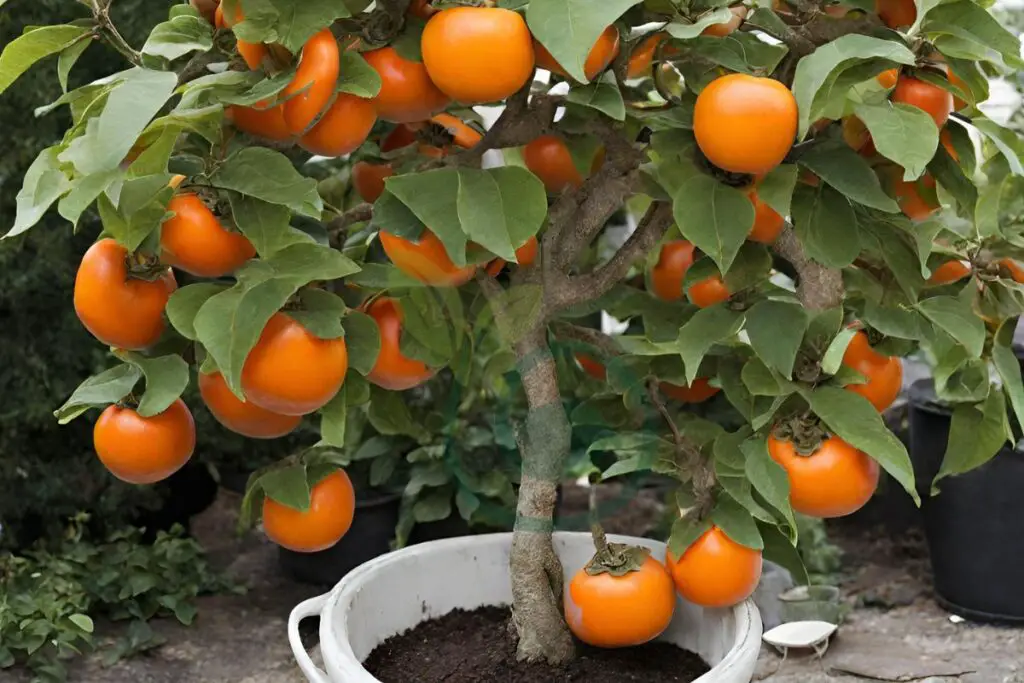
Space saving
Growing a persimmon tree in a pot is perfect for small spaces like gardens or balconies. Pruning helps keep the tree size manageable, and there are dwarf varieties available, making it easy to fit in limited areas.
Pots offer portability, allowing you to move your persimmon tree indoors during winter months. This flexibility makes potted cultivation suitable for urban gardening where space is scarce. It's advisable to use lightweight containers for easier transportation.
Controlled environment
When you grow a persimmon tree in a pot, you have better control over soil conditions compared to planting directly in the ground. Pots provide protection from extreme weather conditions that could harm the plant if it were planted outdoors.
Potted cultivation also facilitates easier pest management since you can monitor and address any issues more effectively when the tree is grown in a controlled environment.
Choosing the Right Pot
When considering growing a persimmon tree in a pot, selecting the right container is crucial. Start by choosing a pot that is at least 24 inches wide and deep to provide ample space for the tree's roots to grow. Ensuring proper root space is essential, as crowded roots can hinder growth and development.
For potted persimmon trees, drainage holes are vital to prevent waterlogging and root rot. Opt for pots with adequate drainage holes at the bottom to allow excess water to escape easily. Using a well-draining soil mix will further help maintain optimal moisture levels for the tree's roots.
Terra cotta and plastic containers are popular choices among gardeners. These materials offer durability while allowing airflow to reach the roots, promoting healthy growth. Avoid metal containers as they can heat up quickly under sunlight, potentially harming the tree's roots.
Size considerations:
- Choose a pot at least 24 inches wide and deep
- Consider root space when selecting container size
- Ensure adequate drainage holes
Material types:
- Terra cotta and plastic pots are common choices
- Porous materials allow better airflow to roots
- Avoid metal containers that can heat up quickly
Elevating potted persimmon trees on bricks can also enhance drainage by allowing excess water to flow out freely from the bottom of the pot. This simple technique helps prevent water accumulation around the roots, reducing the risk of overwatering-related issues.
Soil and Fertilization
The right soil mix is crucial. Opt for loamy soil that drains well, including perlite or sand for proper aeration. Avoid heavy clay soils as they can lead to waterlogging issues, harming the tree's roots.
For fertilizing your potted persimmon tree, choose a balanced fertilizer with an NPK ratio of 10:10:10 during the growing season. Organic options like compost or manure can also be beneficial for healthy growth. Remember to feed your persimmon tree every 4 to 6 weeks but reduce feeding during winter months when growth slows down.
It's essential to follow a feeding schedule when caring for your potted persimmon tree properly. By providing the right nutrients at the right times, you ensure its health and productivity. Following package instructions regarding dosage is vital to prevent over-fertilization which can harm the plant rather than benefit it.
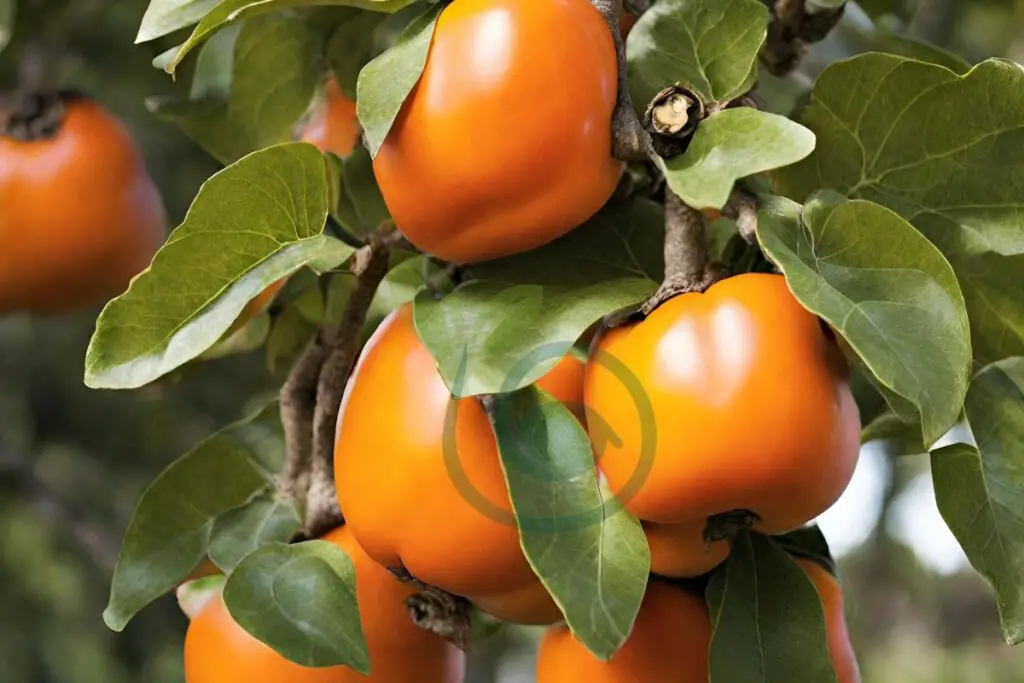
Planting Process
Seed Selection
When considering planting a persimmon tree in a pot, opt for grafted trees for faster fruit production. Seeds might not grow into the same type of parent plant, so it's best to purchase seeds from reliable sources like Epic Gardening.
To ensure successful germination, soak the seeds in water for a day before planting them about an inch deep in moist soil. It's crucial to maintain consistent moisture levels in the soil to support seed growth.
Germination Steps
For growing a persimmon tree successfully, remember that young trees need repotting every two years. When transplanting, handle the delicate root system with care to avoid damage that could hinder growth later on.
Gradually acclimate your persimmon tree to its new pot after transplanting by adjusting its exposure to sunlight and watering routine. By following these steps diligently, you can enjoy watching your persimmon tree thrive and bear fruits.
Watering and Sunlight
Watering Frequency
To grow a persimmon tree in a pot successfully, water deeply but infrequently to prevent root rot. Check the soil moisture by sticking your finger into the soil; if it feels dry, it's time to water again. Adjust your watering schedule based on climate conditions.
Ensuring that the persimmon tree is not sitting in soggy soil is crucial as they do not like having "wet feet." This means allowing the top few inches of soil to dry out between waterings. By following these watering practices, you can promote healthy growth and avoid issues related to overwatering.
Sunlight Requirements
Persimmon trees require at least 6 hours of sunlight daily for optimal growth. Place your potted tree in a location where it can receive adequate sunlight throughout the day. To ensure even sun exposure on all sides of the plant, periodically rotate pots.
Protect your persimmon tree from harsh afternoon sun that could scorch its leaves by providing shade during peak sunlight hours or moving it to a spot with filtered light. Proper sunlight exposure is essential for fruit production and overall plant health when growing persimmons in containers.
Pruning and Maintenance
Pruning time
Prune your persimmon tree in late winter or early spring. This is the best time to remove dead or crossing branches that can hinder growth. Pruning helps shape the tree to your desired form, ensuring it grows strong and healthy.
When pruning, look for any branches that are diseased, damaged, or growing inwards towards the center of the tree. By removing these branches during pruning, you allow more sunlight and air circulation within the canopy. This promotes better fruit production and overall tree health.
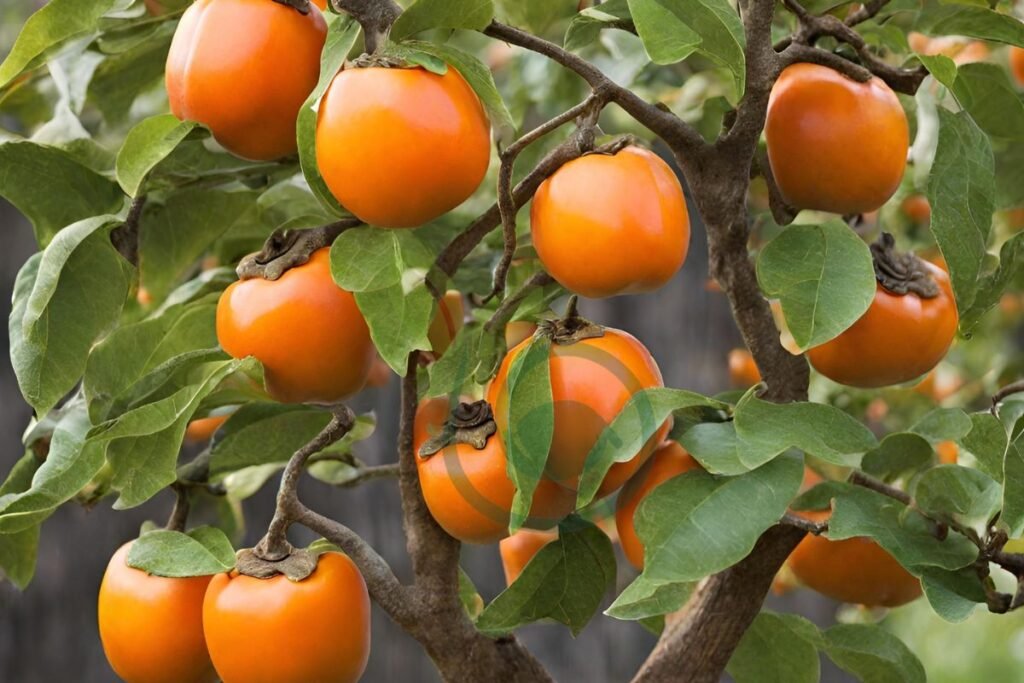
Maintenance tips
Regularly check your potted persimmon tree for pests and diseases. Look out for common issues like aphids, spider mites, or fungal infections. By catching these problems early on, you can prevent them from spreading further throughout your plant.
Mulching around the base of your persimmon tree helps retain moisture in the soil and suppresses weed growth. Mulch provides insulation to protect roots from extreme temperatures. Remember to monitor your tree's growth regularly; adjust watering, fertilizing, and care practices as needed based on its development.
Pest and Disease Management
Common Pests
A persimmon tree grown in a pot can still be susceptible to pests like aphids and spider mites. These tiny insects can cause damage by feeding on the leaves, affecting the overall health of your tree. To combat these pests organically, consider using neem oil, a natural pest control method that is safe for both the plant and the environment. Regularly inspecting your persimmon tree's leaves allows you to catch any pest infestations early before they escalate.
Disease Prevention
When growing a persimmon tree in a pot, it's crucial to prevent fungal diseases by avoiding overhead watering. Excessive moisture on the leaves can create an ideal environment for fungi to thrive. Ensure good air circulation around your potted persimmon tree by spacing it adequately from other plants or objects. This airflow helps reduce humidity levels around the tree, minimizing the risk of fungal infections. Promptly remove any infected leaves you notice to prevent diseases from spreading further.
Harvesting and Usage
Harvest time for persimmons is crucial. For Fuyu variety, pick the fruits when they are fully colored and firm. On the other hand, for Hachiya type, wait until they are soft to harvest them. This difference in harvesting times ensures that you enjoy the best taste from each variety.
Keep them at room temperature if they need further ripening. Once ripe, store them in the refrigerator to maintain freshness. Remember not to stack them on top of each other as this can cause bruising and spoilage.
Persimmons offer a versatile range of usage ideas once harvested. You can simply eat them fresh as a healthy snack or incorporate them into various dishes like salads or desserts. They also make delicious additions to jams or preserves due to their sweet flavor profile.
Summary
You've now got the lowdown on growing persimmon trees in pots. From understanding the ins and outs of these fruits to learning how to select the perfect pot, you're all set to embark on this fruity adventure. Remember, it's not just about planting a tree; it's about nurturing it like your own baby. So, get your hands dirty, feed it right, and watch it flourish under your care. Don't forget, a little love goes a long way in gardening. Now go on, grab that pot and start your mini orchard today!
Frequently Asked Questions
Can persimmon trees thrive in pots?
Yes, persimmon trees can thrive in pots if provided with adequate care and attention. Choose a suitable pot size, ensure proper soil quality, watering routine, sunlight exposure, and occasional pruning to support healthy growth.
What are the benefits of growing persimmons in pots?
Growing persimmons in pots allows for better control over soil conditions, easier pest management, convenient mobility for adjusting sunlight exposure, and suitability for smaller spaces like balconies or patios. It also facilitates protection against adverse weather conditions.
How do I choose the right pot for a persimmon tree?
Select a large pot with good drainage holes to prevent waterlogging. Ensure the pot is sturdy enough to support the tree's growth without toppling over. Consider using a container that provides ample space for root development and promotes air circulation.
What type of soil is best for planting persimmon trees in pots?
Use well-draining loamy soil mixed with organic matter like compost or peat moss. This combination ensures proper moisture retention while preventing water stagnation that could lead to root rot. Avoid heavy clay soils that may hinder root development.
When should I harvest persimmons from a potted tree?
Harvest ripe persimmons when they have developed their full color and feel soft to touch. For non-astringent varieties like Fuyu, you can pick them when firm as they ripen off the tree too. Enjoy your homegrown fruits fresh or use them in various culinary delights!
Image Source: Paid image from CANVA

